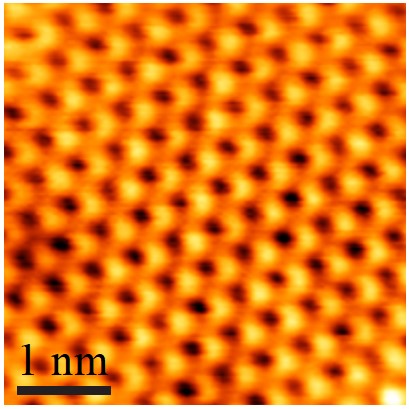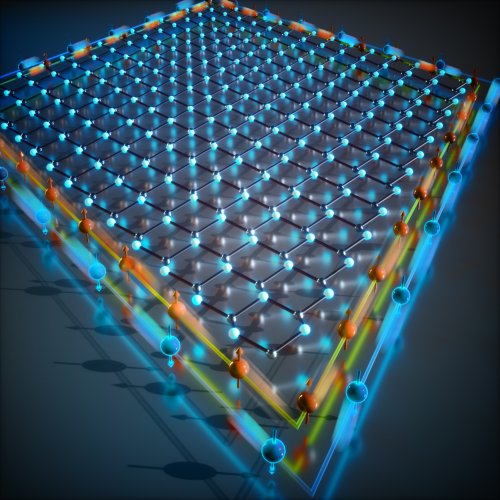| May 16, 2023 |
The first first 2D topological insulator that consists of a single element
(Nanowerk News) Researchers from the University of Twente proved that germanene, a two-dimensional material made of germanium atoms, behaves as a topological insulator. It is the first 2D topological insulator that consists of a single element. It also has the unique ability to switch between ‘on’ and ‘off’ states, comparable to transistors. This could lead to more energy-efficient electronics.
|
|
The findings are published in Physical Review Letters ("Quantum Spin Hall States and Topological Phase Transition in Germanene").
|
 |
| Scanning tunnelling microscopy topography of the honeycomb lattice of germanene. (Image: University of Twente)
|
|
Topological insulators are materials with the unique property of insulating electricity in their interior while conducting electricity along their edges. The conductive edges allow electrical current to flow without energy loss.
|
|
“At the moment, electronic devices lose a lot of energy in the form of heat, because defects in the material increase the resistance. As a result, your mobile phone can get uncomfortably hot”, explains UT researcher Pantelis Bampoulis.
|
|
While scattering at defects is allowed in normal materials, at the edges of 2D topological insulators, the scattering of electrons at defects is forbidden due to the unique topological protection mechanism. Therefore, electrical current in 2D topological insulators flows without dissipating energy. This makes them more energy-efficient than current electronic materials.
|
Creating germane
|
|
Germanene is such a 2D topological insulator. “Current topological insulators consist of complex structures from different types of elements. Germanene is unique in that it’s made from just a single element”, explains Bampoulis.
|
|
To create this exciting material, the researchers melted germanium together with platinum. When the mixture cooled down, a tiny layer of germanium atoms arranged into a honeycomb lattice on top of the germanium-platinum alloy. This 2D layer of atoms is called germanene.
|
 |
| Artistic illustration of the dissipationless edge channels in germanene. (Image: Ella Marushchenko)
|
Topological transistors
|
|
The researchers also discovered that the conducting properties of the material can be switched ‘off’ by applying an electric field. This property is unique for a topological insulator. “The possibility to switch between ‘on’ and ‘off’ states adds an exciting application case for germanene”, says Bampoulis. It paves the way for designing topological field-effect transistors. These transistors could replace traditional transistors in electronic devices. Resulting in electronics that no longer heat up.
|


